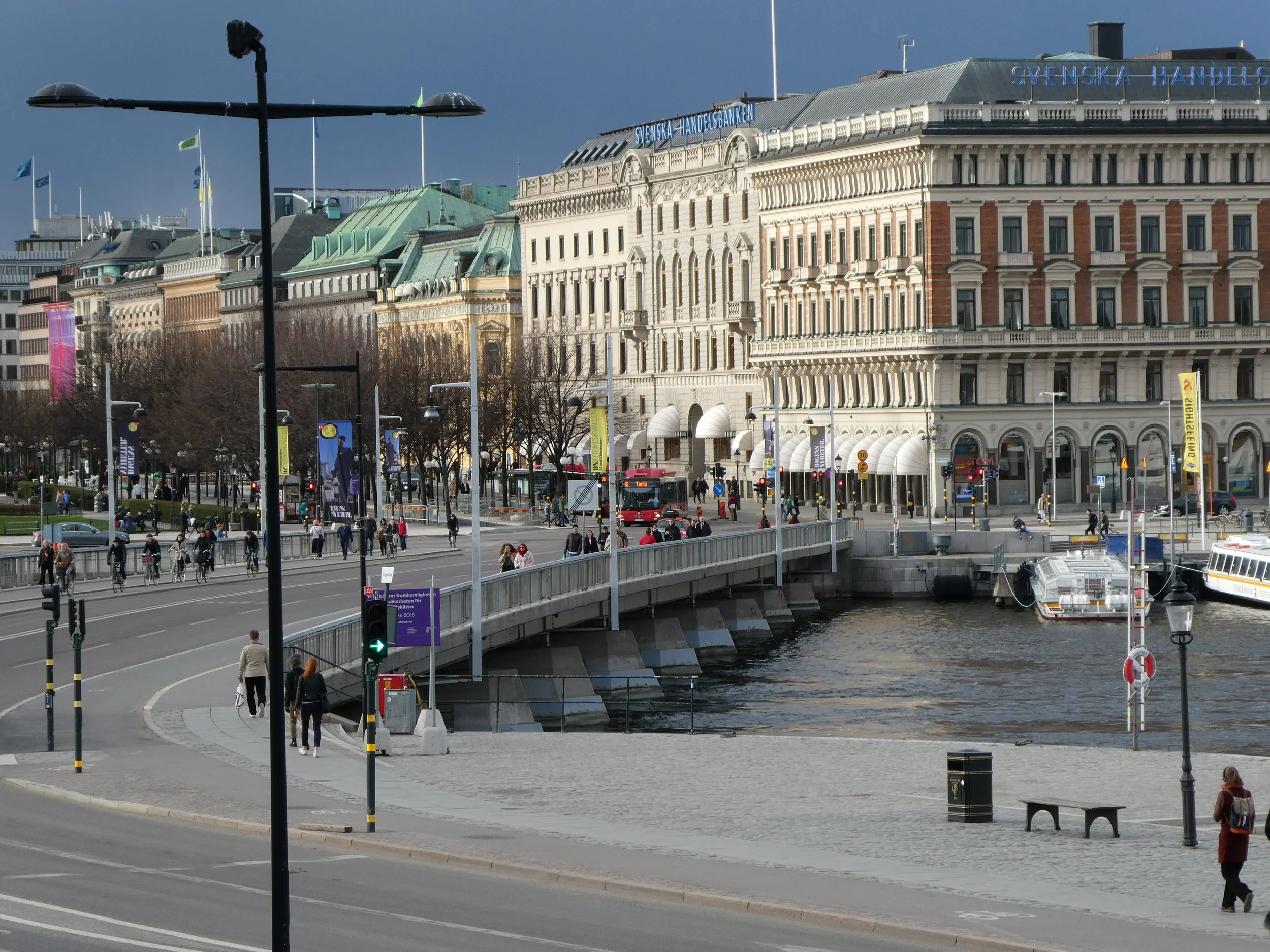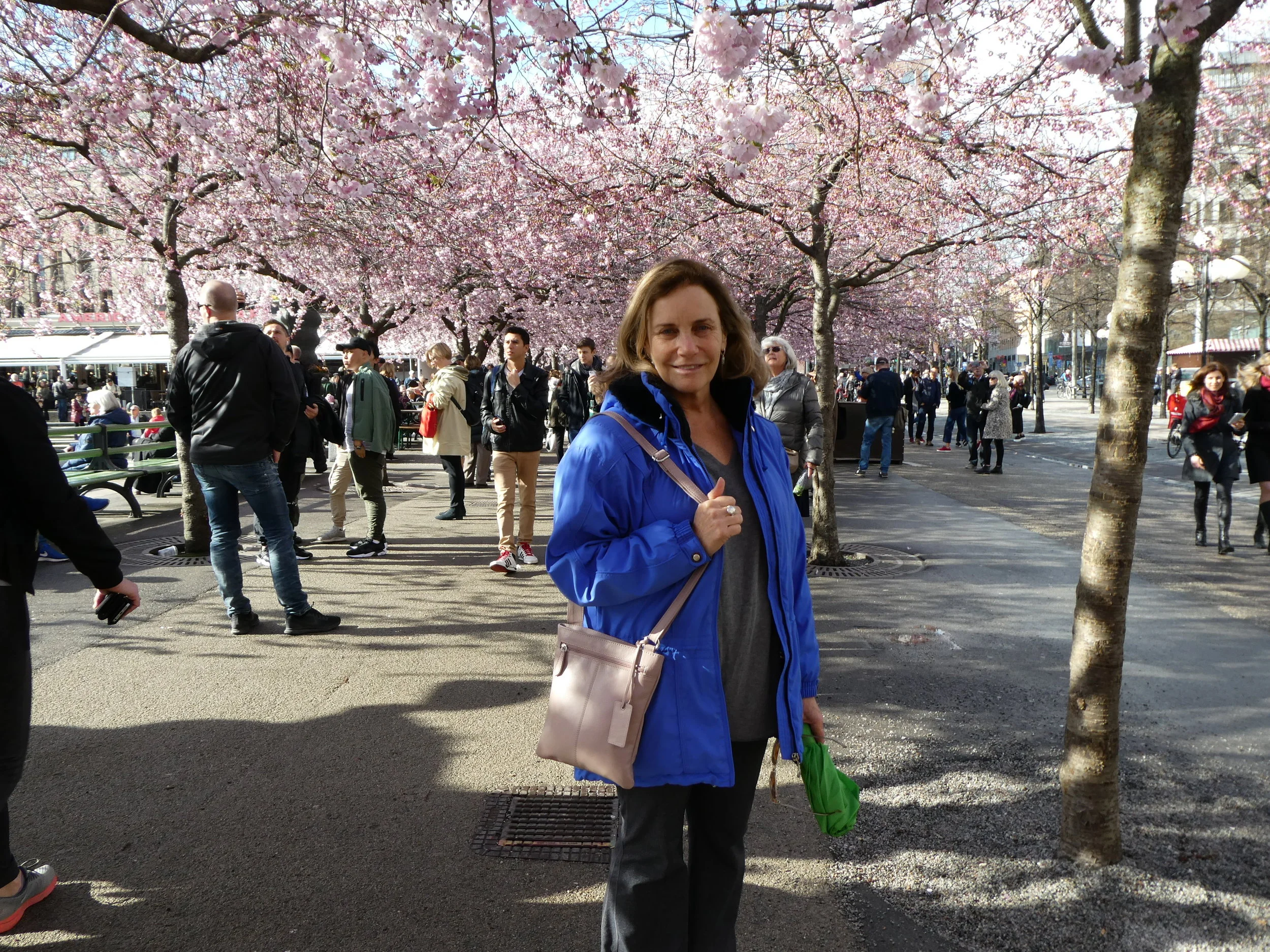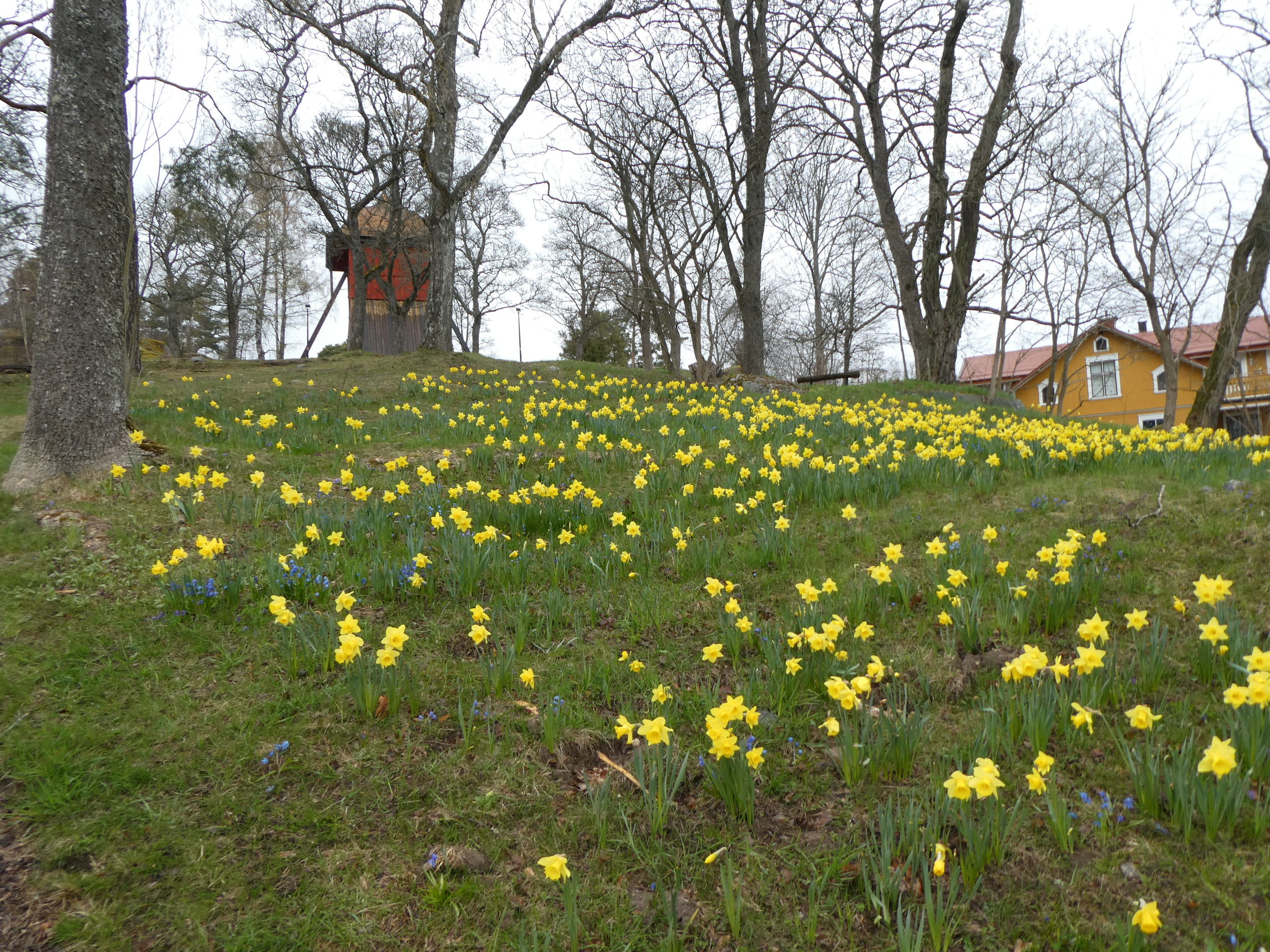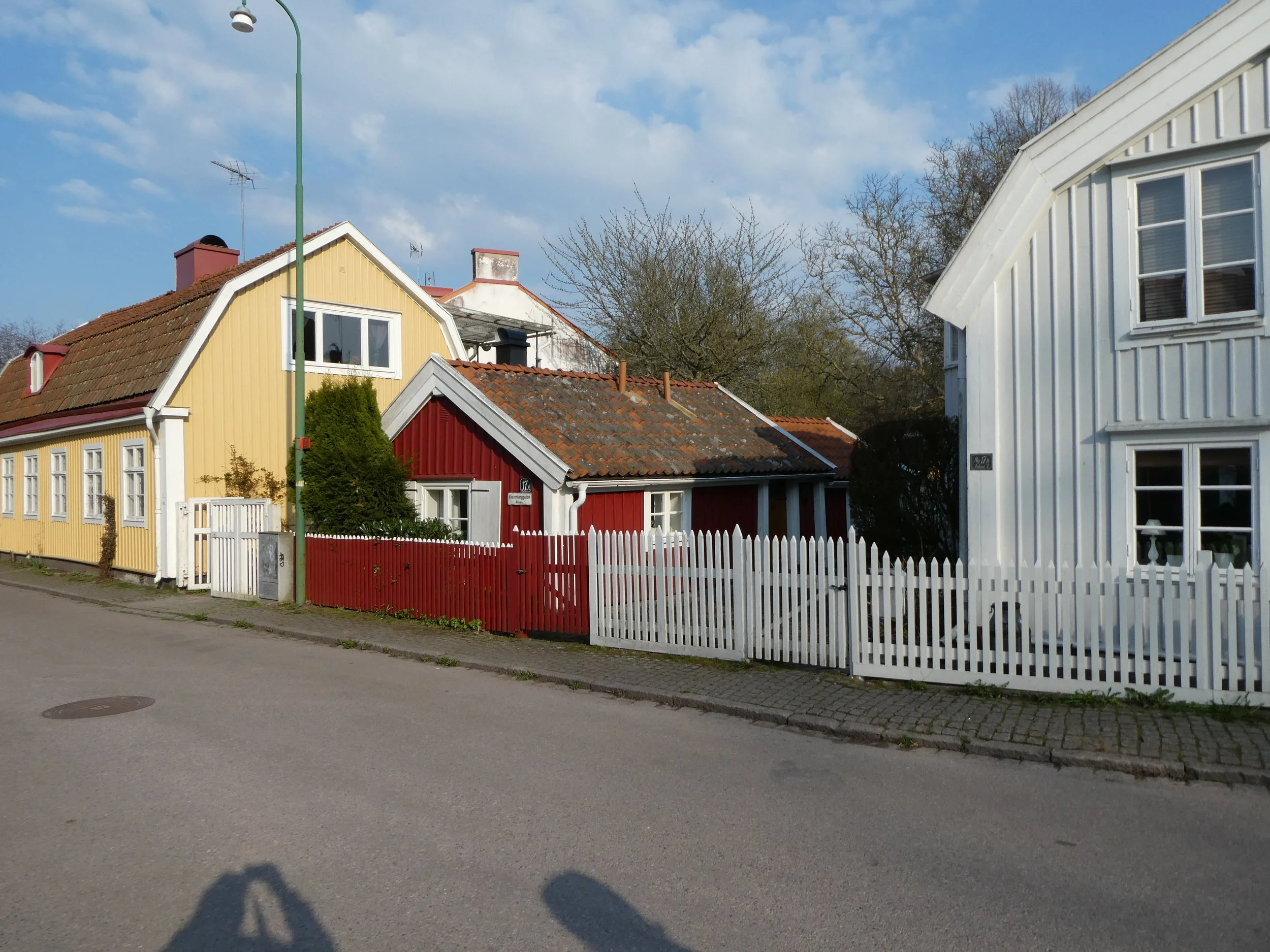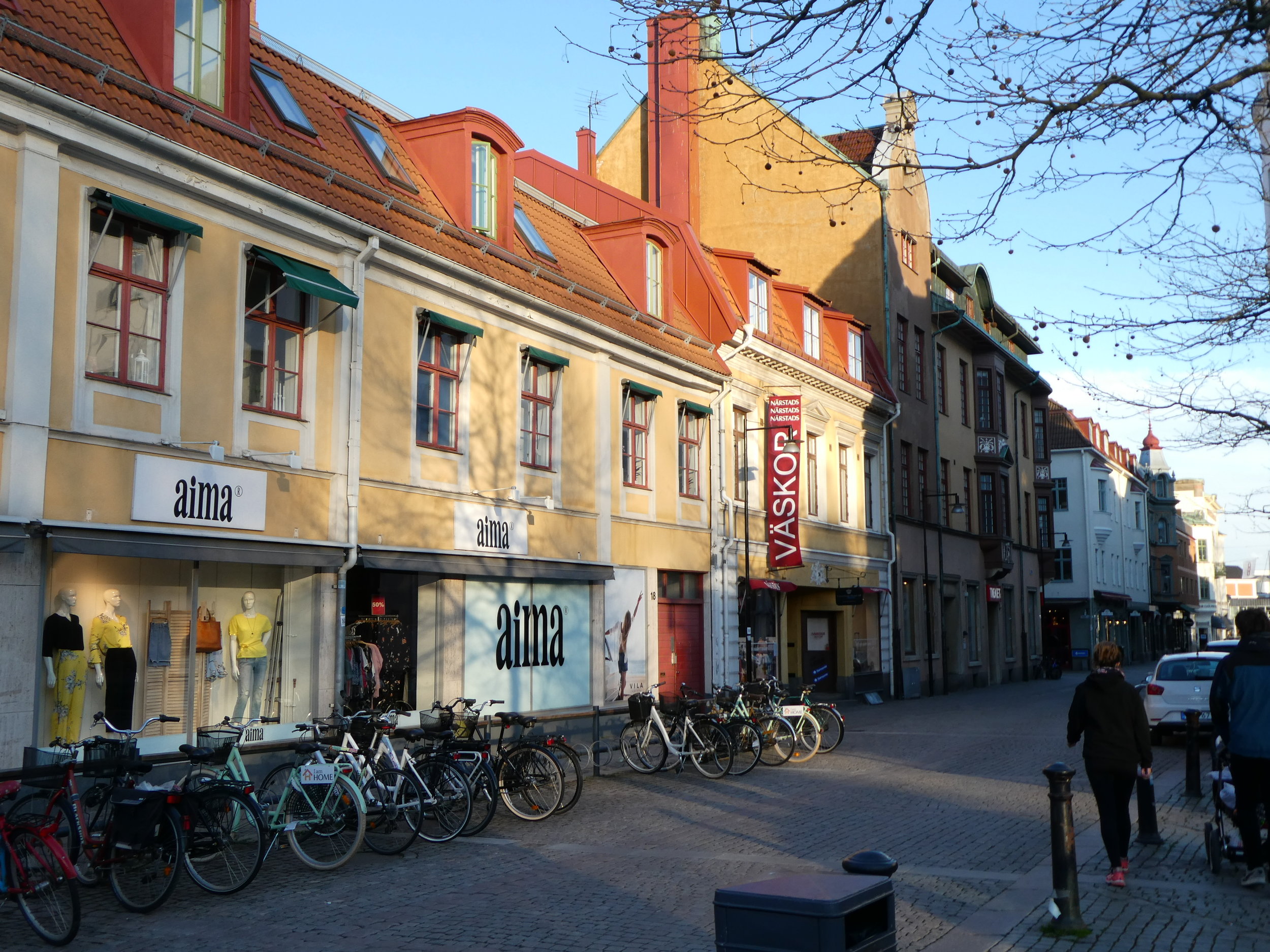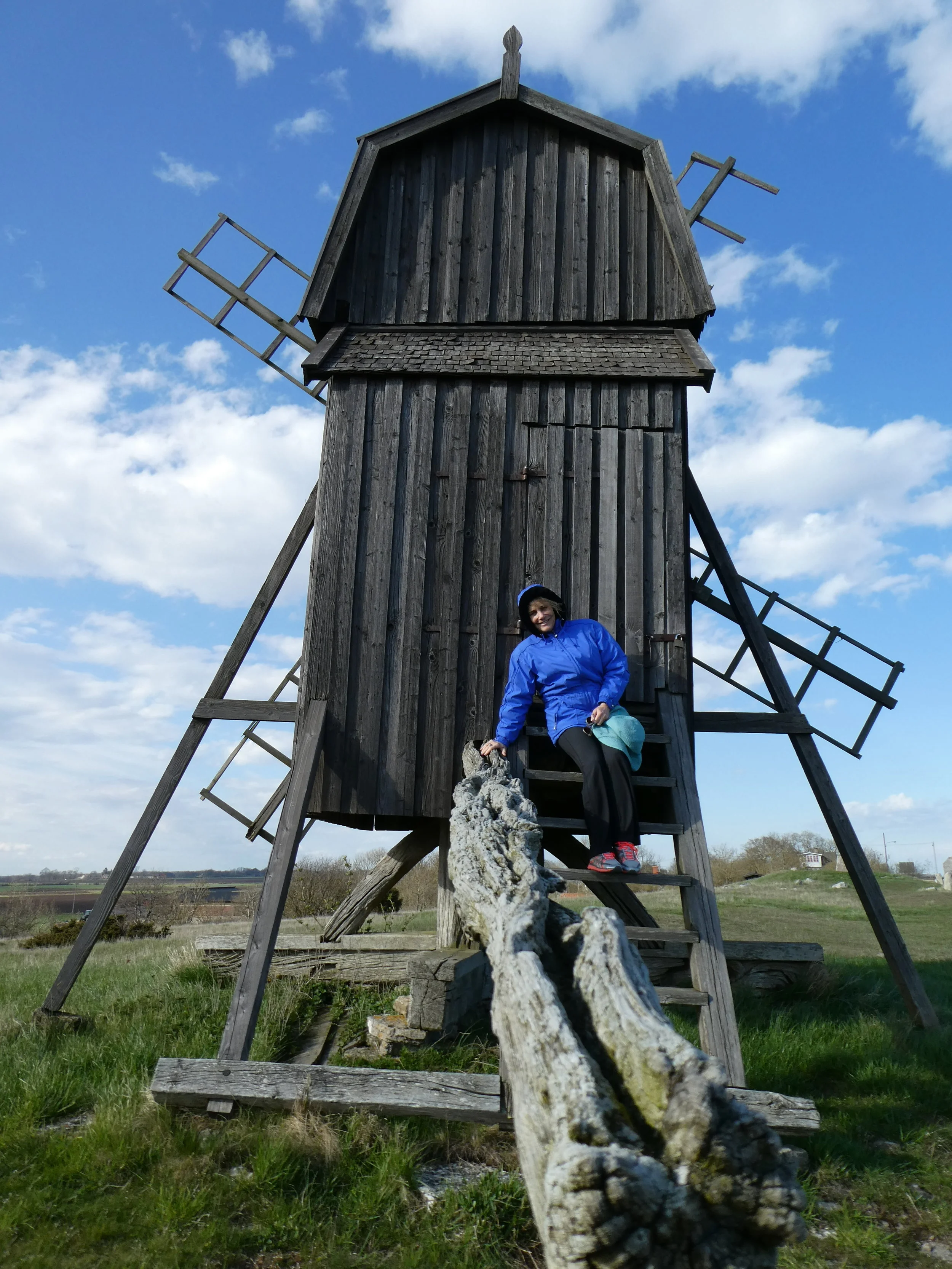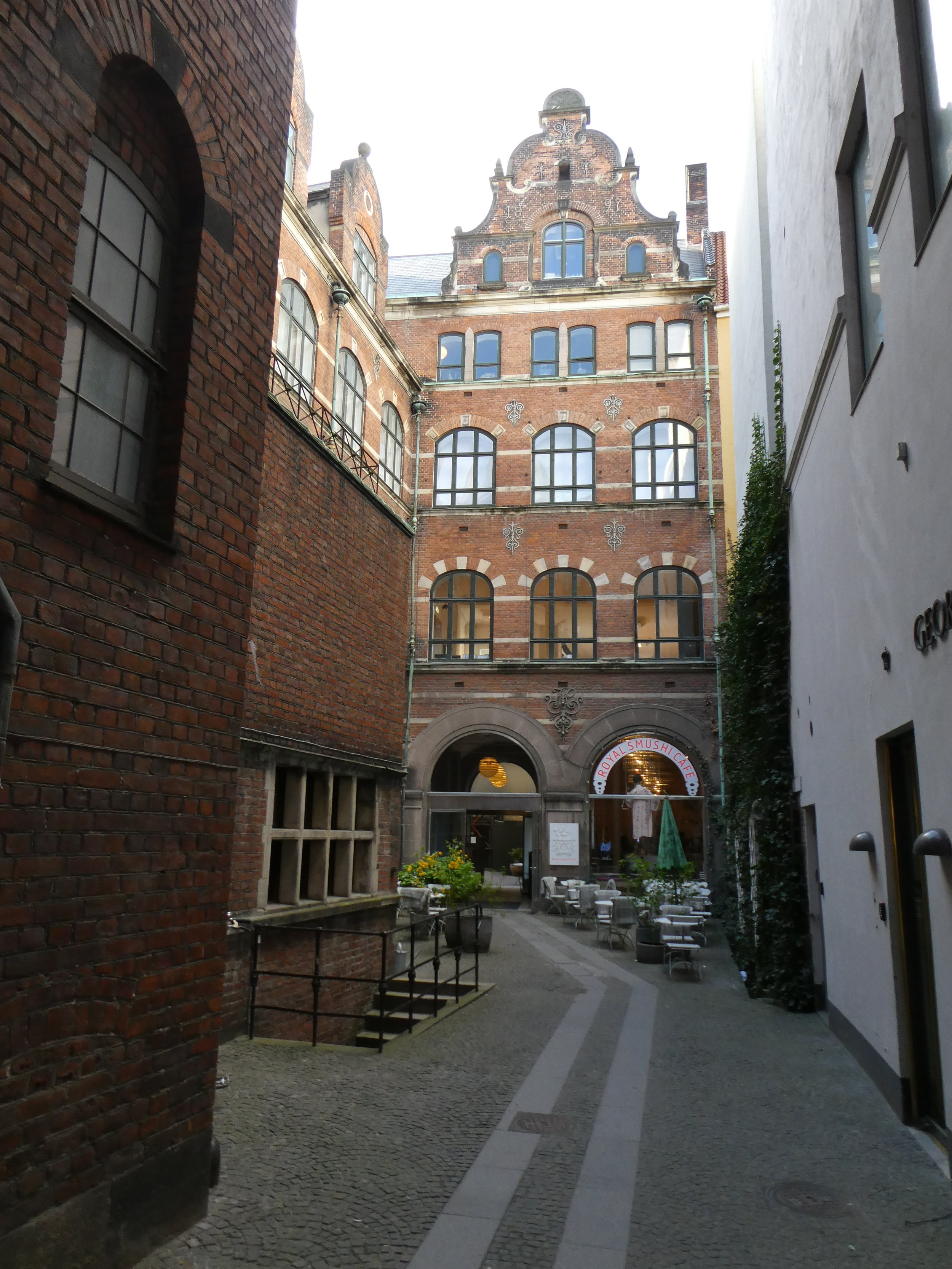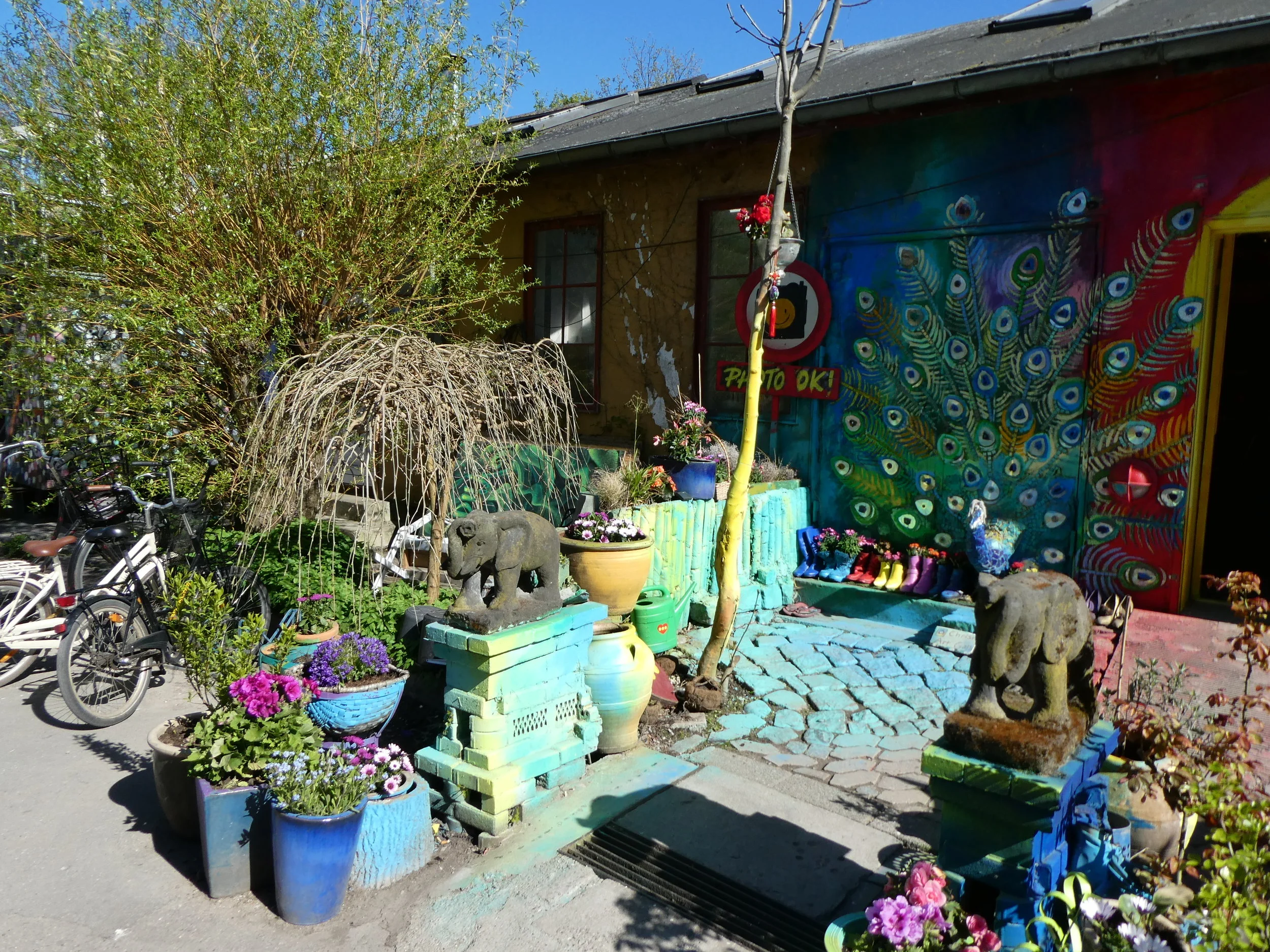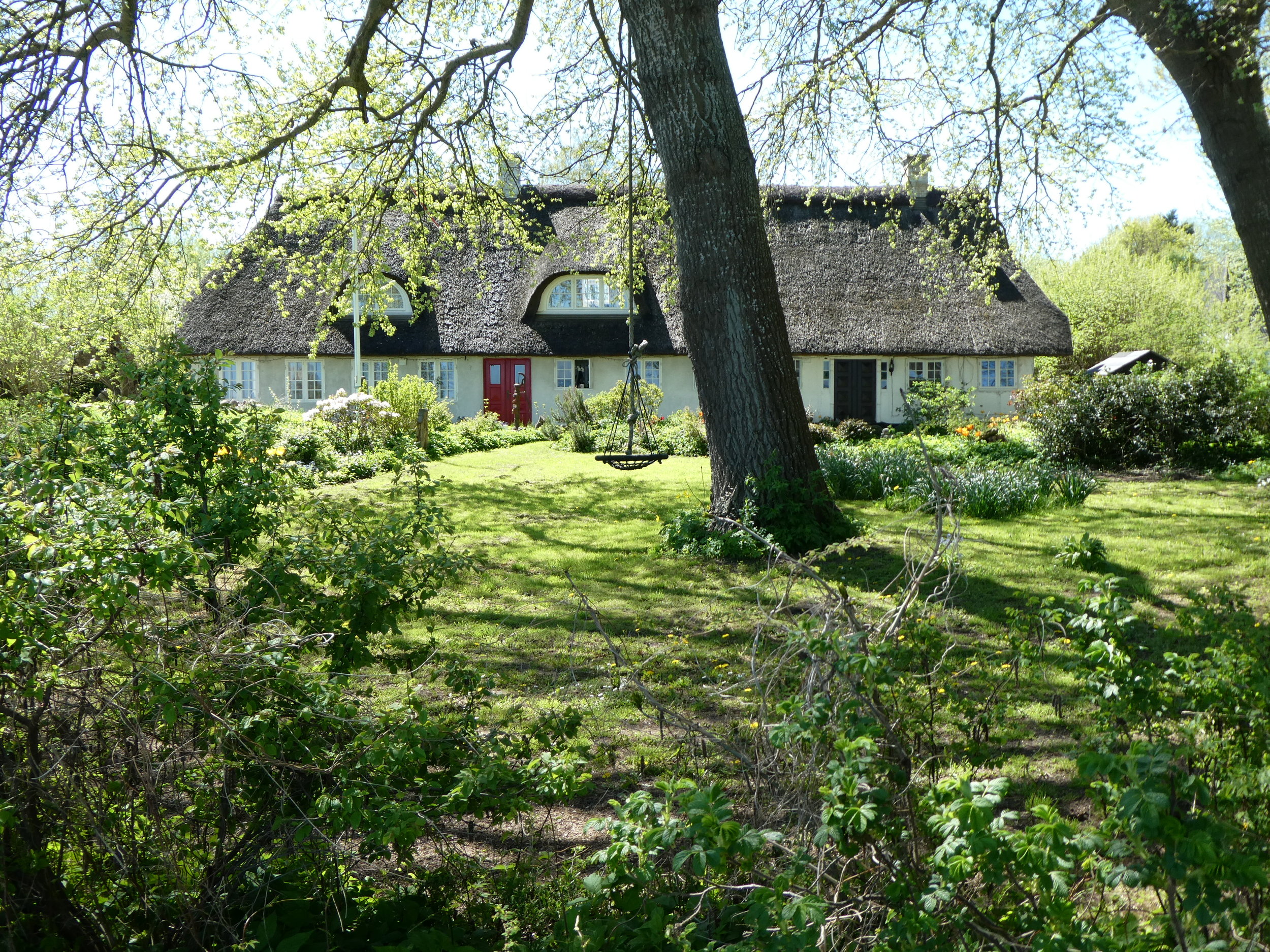The Skinny on Scandinavia (Sweden and Denmark, that is)

Beautiful and clean Stockholm
Food has always been an enjoyable part of travel for us—the excitement of discovering new foods, new flavors, new recipes, creative preparations. So visiting countries that are new to us since adopting a restricted diet in late February (vegan, no oil—see www.drmcdougall.com/) gave us a challenge that we hoped would not be too much of a distraction or take the fun out of this aspect of our travels. We are happy to report that three weeks in to our journey, we have found it relatively easy to stick to our vegan diet and we don't feel deprived nor distracted.
Strolling along the Stockholm waterfront headed toward Embassy Row.
The greater issue for us has been how to keep warm and dry given the shock of being Angelenos in Scandinavia in the springtime. We roam through the city in our ski attire, mittens, and thermal underwear, while the locals celebrate the season with little more than light sweaters and jeans. Bone chilling when it is cloudy, Stockholm becomes glorious when the sun shines. Everywhere we look, tulips, daffodils, ranunculus and enormous dandelions are springing up. Tourists pose under huge clumps of cherry blossoms, the blooming trees seen throughout the city, and with a plaza in the city center providing a particularly dazzling display for great photo ops.
With the sun out, Stockholm's many waterfront promenades and plazas give locals and tourists alike the opportunity to relax in outdoor cafes, lazily sipping beers and coffees. We, however, push on since we are both more interested in exploring vast areas of the city on foot now rather than sitting in one place to watch the street scene.
The central square in Sigtuna. Even in the cold rain, this was a wonderful excursion.
Our 72-hour transit pass has us using the convenient and efficient metro and ferry boat system all over the sprawling city, and the pass even includes regional trains and buses which we take to quaint Sigtuna, a well-preserved town from the 1600s about one hour away from Stockholm. Though it's a damp and cold day, we enjoy the clean, crisp air scented with the floral smells of spring as we walk around town and hike up to viewpoints overlooking Lake Mälaren, the third largest lake in Sweden which meets and flows into the Baltic Sea back in Stockholm.
One of the oldest buildings in Sigtuna, it currently houses a popular cafe.
unfortunately they only offered outdoor seating when we visited
Daffodils in Sigtuna. They seem to grow everywhere.
Overlooking the lake from a viewpoint above Sigtuna.
We head to the small city of Kalmar in the southern part of Sweden where we stay in an Airbnb historic cottage built in the 1600s. Photos of the exterior of this cottage are on postcards and in the Rick Steves guidebook and also noted on his walking tour through Kalmar so curious tourists come by all day long for the photo op. Despite many concussions from walking through the low doorways inside this teensy living space, Bill manages to navigate our way to glass country, a densely forested part of Sweden where many of their top glass producers like Kosta Boda and Orrefors manufacture beautiful crystal. This part of Sweden seems lightly populated. Wide roads with little traffic seem odd compared to our past travels by car in Europe. And, walking around Kalmar is like visiting a ghost town—a very pretty ghost town and with buildings intact but one with little going on, at least this time of year.
Our little red cottage in Kalmar.
The glass bar at a hotel in glass country known for its many glass decorations.
Kalmar at night.
Kalmar cathedral.
This rug cleaning house is still in use. Rugs are placed on the floor, then the floor lowers down into the water where they can be scrubbed and cleaned with lake water.
Windmills dot the island of Öland outside of Kalmar.
Lots of churches, thatched cottages, and Viking burial sites to see in Öland.
Of course, things are not so quiet in Copenhagen, which is a city that seems much more compact than Stockholm, at least the areas of interest to tourists. We walk everywhere here and rely on our feet instead of the metro to explore it. Reminiscent of Amsterdam, a place which was much admired by the city planners here, it has many canals, waterways and foot and bicycle bridges but the boulevards are much wider here and with many open large plazas.
You know you’re right in the middle of things when you see the 7-Eleven, Burger King, and KFC before you.
Ecletic little stores manage to exist beside the H&Ms and TGIFridays chains in this central area.
Tivoli and its well-tended gardens.
Tivoli becomes magical at night when the lights come on.
Though weed is not yet legal in Denmark, in the suburb of Christiania, grass and hash are openly sold. We would have provided more pictures, but Bill got reprimanded for taking out his camera in the “business” district here, appropriately named Pusher Street. The second most popular tourist destination in Copenhagen after Tivoli Gardens, Christiania is a Never Never Land for those seeking an “alternative” lifestyle. Originally established in 1971 by a large group of hippie squatters who occupied some abandoned military barracks on the site, Freetown Christiania is a green and car-free neighborhood, best known for its autonomous inhabitants’ different way of life. The Christianites, as they are called, developed their own set of society rules with peace and love being the cornerstones. Freetown Christiania is a mix of homemade houses, workshops, art galleries, music venues, cheap and organic eateries, and beautiful semi-rural green space. It is still a society within a society, for example you cannot buy a house in Christiania. You have to apply for it, and if successful, it is given to you by the community. The area is open to the public and there are even guided tours run by the locals, though we roamed freely on our own. Christiania is completely independent of the Danish government and feels like a gigantic commune. Its survival was precarious for many decades but it currently has the acknowledgement of the Danish government as a legitimate entity...so long as they pay taxes.
Ever challenging the boundaries between art and garbage.
By the time we get down to the island of Ærø, it’s as if we changed seasons. The island is a paradise for bicyclists and now in t-shirts, we are breaking into a sweat climbing up some of the steeper hills with sweeping sea views always visible in the distance. We pass through fields of bright yellow, pungent rapeseed and ride beneath magnolia trees in full bloom and along Gustav Klimpt-like rows of trees, with their tiny buds and pale green leaves just beginning to unfurl. It’s hard to believe that this island has not been turned into a full blown tourist destination yet, but agriculture is its primary business followed by shipping, and then tourism. The locals seem to be struggling economically and we notice many properties for sale. We find "our cottage", a bit dilapidated and overgrown with dandelions but within walking distance to wind-swept bluffs over the sea. Not exactly Nantucket prices, the cottage and land can be had for about US $100,000.
Nice little cottage for sale in a great location.
Wonderful bicycling on Ærö.
More thatched roofs on Ærö.
Ellen goes shopping at an honor box.
We paused here to photograph this typical Danish house, and after a minute of being quiet, hundreds of frogs began singing us a loud serenade.
After a brief overnight stop in Odense to visit Hans Christian Andersen’s house, we are off to Norway where we begin with a cruise down the coast.
Cover: Mosaic of Goddess Mälaren protecting the city of Stockholm.

